If someone proposed to you on the first date, you’d run for the hills.
Asking customers to buy when they barely know your brand is a big ask. It also risks your chances of them getting to know you better.
The marketing funnel describes a buyer’s relationship with your company. It has three distinct stages: top of funnel (TOFU), middle of funnel (MOFU), and bottom of funnel (BOFU).
This guide will explore BOFU content and the best practices to implement.
TOFU vs. BOFU
Top-of-the-funnel content is the first stage of the customer journey. TOFU marketing content is generally educational, designed to introduce your product or service to potential customers and provide basic information.
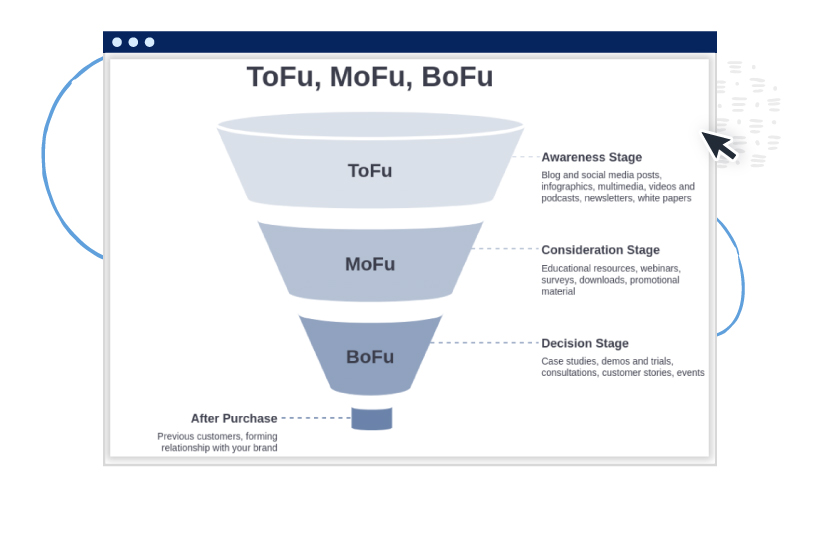
Image source: Visual Paradigm
Bottom-of-funnel is the final stage of the customer journey. Here, potential customers are ready to take action. When a customer gets to this stage, your TOFU and MOFU content have done their jobs.
BOFU content provides in-depth information about a product or service. One example is pricing content that details subscription costs and what’s included.
The BOFU stage addresses their concerns or final objections. This converts potential customers into paying ones.
Examples of BOFU content
BOFU content types include:
Product demos
Product demos are live or recorded demonstrations that showcase the features and benefits of your product or service.
Tips for creation:
- Keep it brief: Focus on the most important benefits and features. Don’t overwhelm them with too much information.
- Use visual aids: Use diagrams, screenshots, and videos to demonstrate features and benefits, supplement explanations, and make the demo more engaging.
- Incorporate real-life examples: Include real-life customer examples to illustrate your product’s or service’s effectiveness. These include testimonials, case studies, and live demos.
- Practice, practice, practice: Practice delivering the presentation multiple times until you’re comfortable with the material.
- Encourage audience participation: Keep your audience interested by asking questions and encouraging comments.
Customer case studies
Customer case studies are stories or testimonials from customers that show how your product or service addressed their pain points.
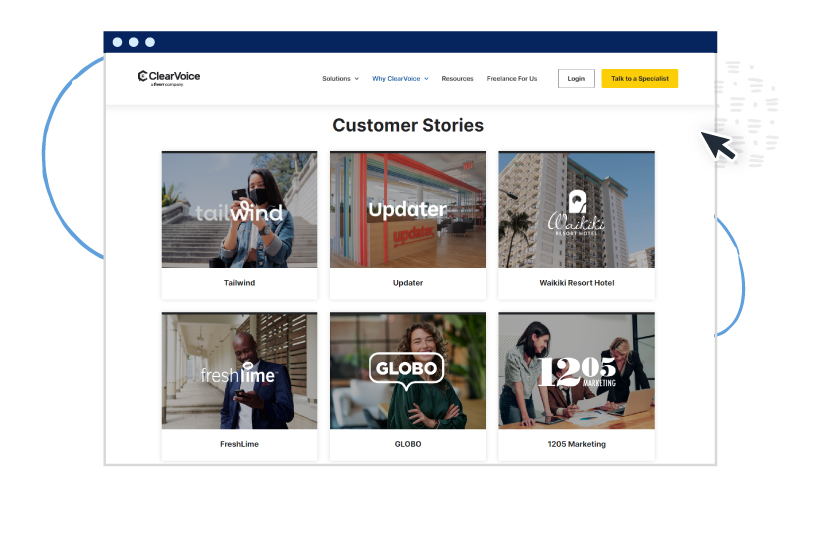
Tips for creating customer case studies:
- Choose the right customer: This customer should represent your target audience. The customer also should benefit from using your product or service. In addition, they must be willing to participate in the case study.
- Focus on outcomes: Highlight the results. These might include improved productivity, increased revenue, or decreased costs.
- Create a compelling narrative: Outline the customer’s problems. Then describe how your product or service solved them. Then list the positive outcomes.
- Leverage social proof: Use quotes or testimonials from the customer to highlight the effectiveness of your offering.
Free trials
Free trials let potential customers test-drive your product or service before their purchase. These are generally only available for a limited time.
Tips for free trial creation:
- Define terms and conditions: Include applicable restrictions or limitations. This prevents confusion and manages expectations.
- Provide value: Make sure the trial provides real value to the customer, such as access to full features.
- Enable easy participation: The signup process should be straightforward. Don’t make them jump through hoops.
- Set clear expectations: Let customers know what happens once the trial period ends. Will they be automatically charged a subscription fee to continue using the product or service?
- Follow up: Reach out to answer any questions about the trial or the product. Offer guidance or additional resources.
- Provide incentives: Incentivize trial users with discounts, special offers, or other features to guide conversion to a paid subscription.
Pricing information
Pricing information provides cost details, including available discounts or promos.
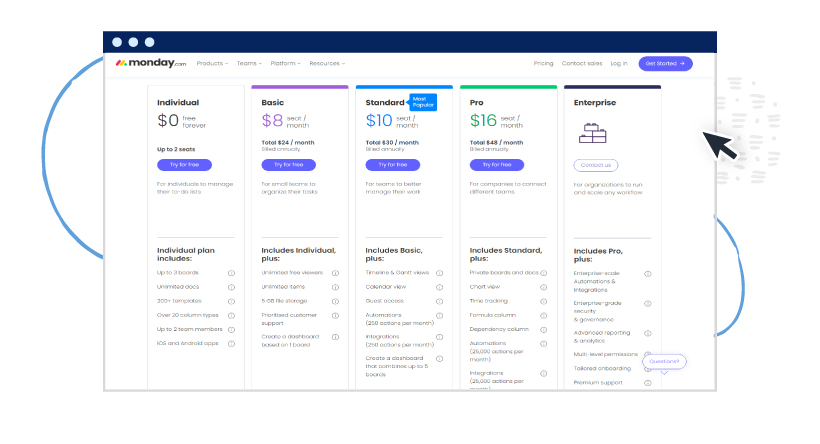
Image source: monday.com
Tips for pricing information content:
- Be clear: Avoid technical jargon that intimidates or confuses potential customers.
- Highlight value: Emphasize how your offering solves problems rather than focusing on pricing alone.
- Offer multiple tiers: Give customers the freedom to choose. Consider different pricing tiers with varying levels of support and features.
- Avoid hidden fees or charges: Customers appreciate transparency and honesty. Transparent pricing structures tell them what exactly they’re paying for.
- Test and iterate: Experiment with different pricing strategies. Adjust based on factors such as market conditions, competitor pricing, and customer feedback.
Comparison guides
Comparison guides show your product or service with competitors, highlighting the distinct advantages of your offering.
Tips for comparison guide creation:
- Focus on key features: Identify the features most important to customers. Compare them across different products or services.
- Be objective: Provide factual information. Avoid bias.
- Highlight differences: Don’t just focus on similarities. Underscore the differences and explain why they matter.
- Provide context: Illustrate the market landscape. Explain applicable industry trends and advancements.
- Use visuals: Graphs, charts, and tables can help your readers more easily compare different offerings.
- Update regularly: Refresh your guides as needed to reflect new information or market changes.
Testimonials
Testimonials are snippets or short quotes from customers that showcase the benefits of your product or service.
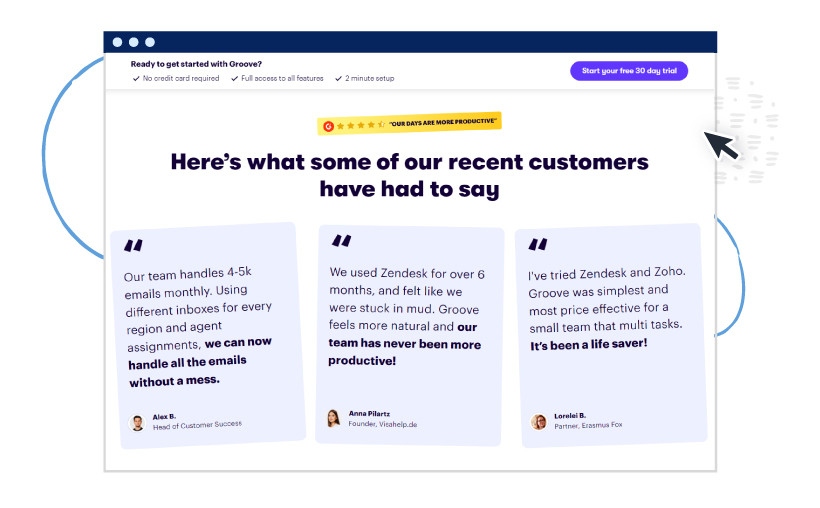
Image source: GrooveHQ.com
Tips for testimonials:
- Choose the right testimonials: Choose the testimonials that highlight specific benefits or features that are important to your target audience.
- Use real customers: Testimonials should be from real customers to build trust.
- Include various formats: Keep your testimonials page interesting with written testimonials, social media posts, and video testimonials.
- Use photos or videos: Add a personal touch with customers’ photos or videos.
- Highlight key quotes: Select and highlight key quotes from each testimonial. This focuses your audience’s attention on the most relevant messages and benefits.
- Keep the page organized: Make your page easy to scan with headings, subheadings, and other types of formatting.
FAQ sections
FAQ sections answer questions customers often ask about your product or service.
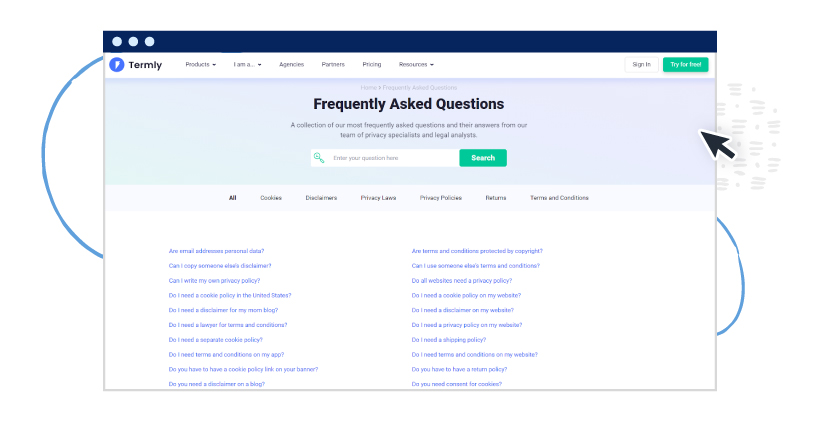
Image source: Termly.io
Tips for FAQ content creation:
- Know your audience: Determine your audience’s common concerns and questions. This allows you to create FAQ content that provides valuable information and addresses customer needs.
- Anticipate as many questions as possible: Provide detailed answers to each.
- Avoid jargon: Use clear, easy-to-understand language. Avoid complicated terminology or technical phrasing.
- Update regularly: Refresh your FAQ content as needed to keep the information current.
- Use visuals: Include images, videos, or diagrams when explaining complex topics.
- Include links to related information: When applicable, add links to relevant resources.
Guarantees
Guarantees are assurances that remove risk for potential customers. Examples include satisfaction guarantees and money-back guarantees.
Tips for guarantees:
- Be specific and realistic: Explain what customers can expect. Don’t promise what you can’t deliver.
- Be transparent: Immediately clarify limitations or exclusions.
- Make it meaningful: Determine what your target audience values most, and create assurances around those.
- Ensure easy claims: Provide instructions on how to claim a hassle-free refund or another guarantee.
- Stand behind your offering: Show that you’re confident in the value your product or service provides.
- Use strong language: Language should demonstrate commitment and confidence. Examples include “promise,” “assurance,” or “guarantee.”
Getting the most out of BOFU content
BOFU is the last stage in the buyer’s journey. It warrants compelling content to improve your chances of converting potential customers into those who pay. Remember to tailor it to your target audience, use social proof, and make it easy to find. Test, measure, and optimize on an ongoing basis.
Need help creating BOFU content that converts? Get in touch to get started with managed content production today.



